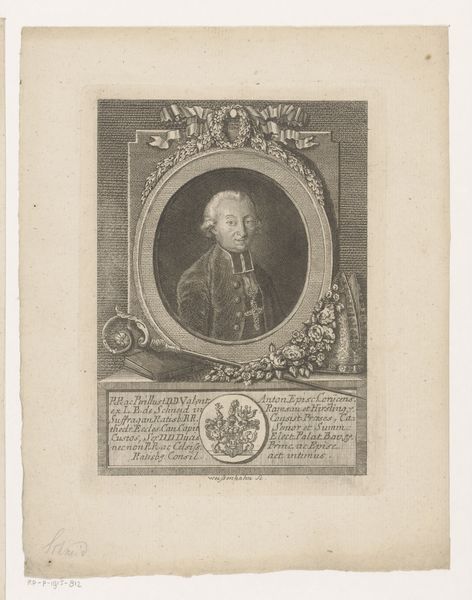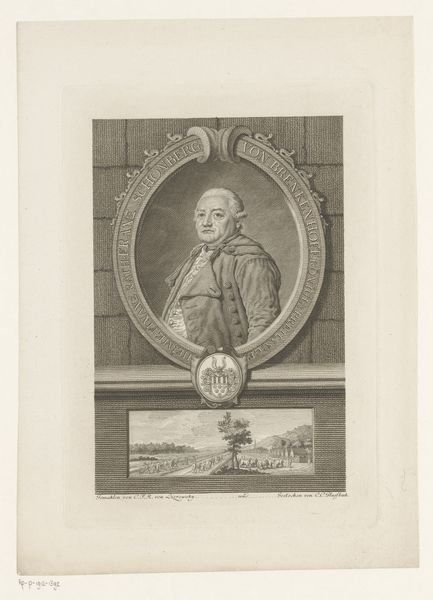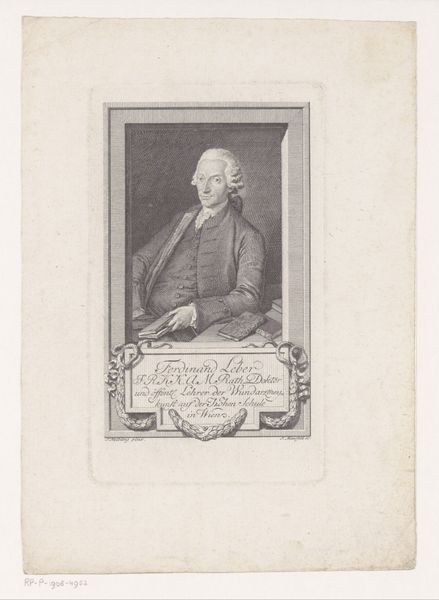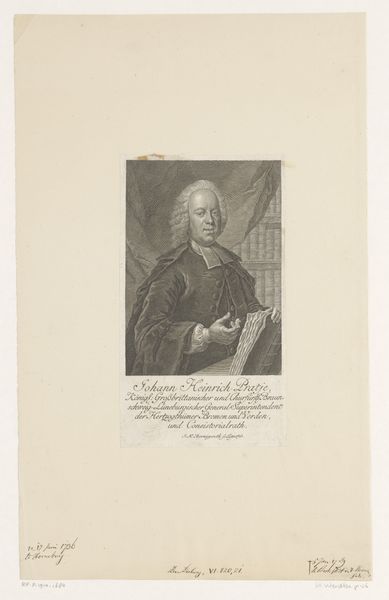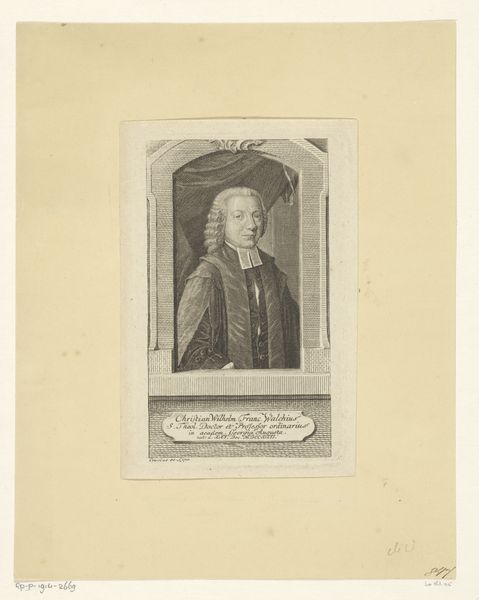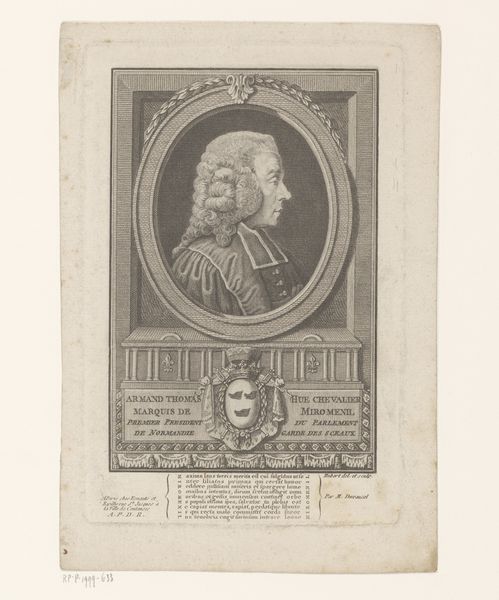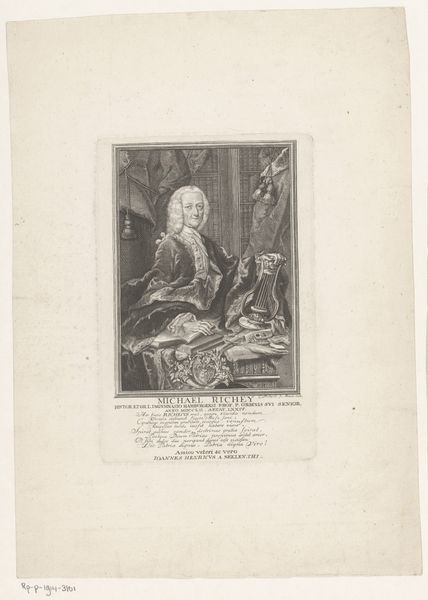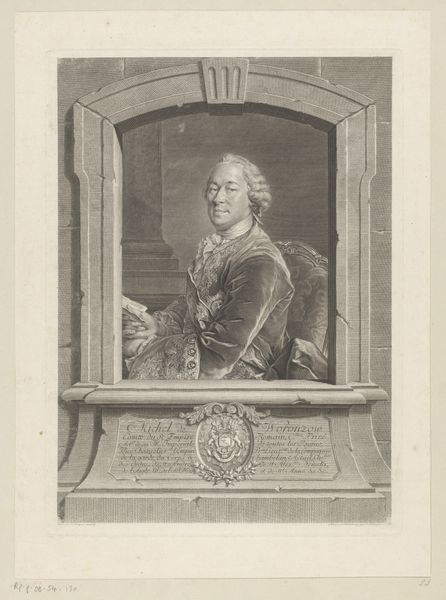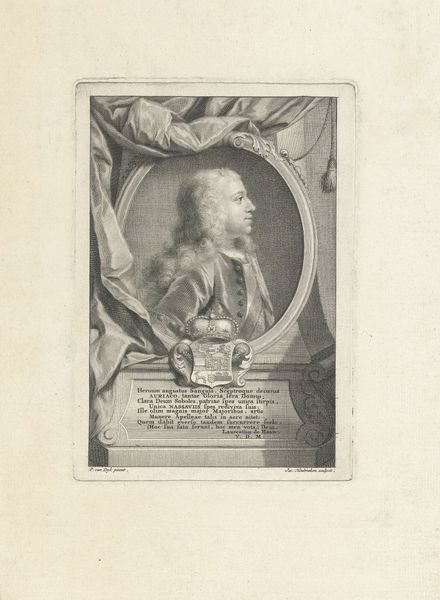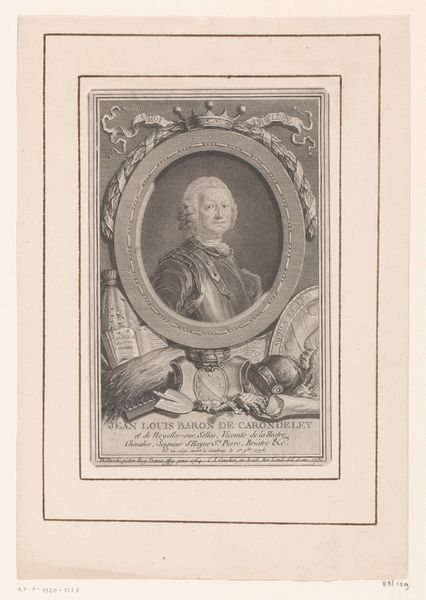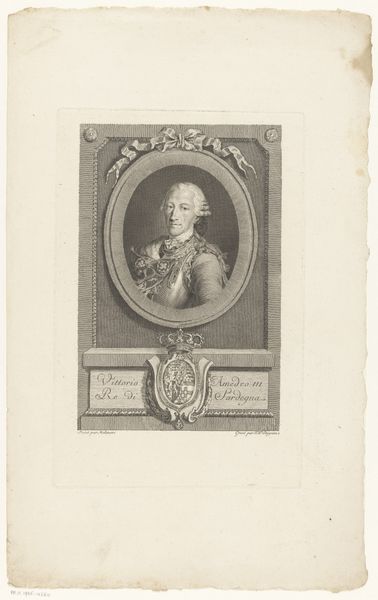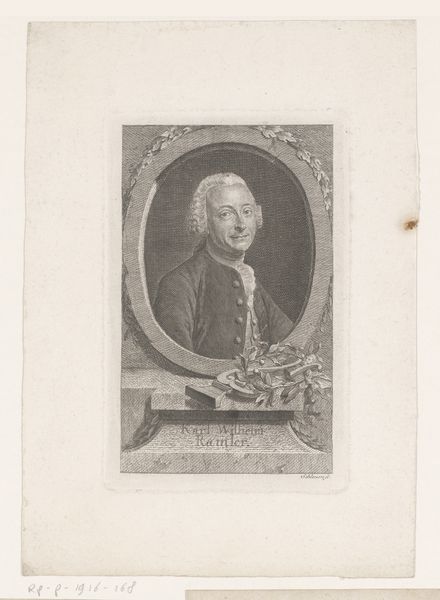
print, engraving
#
portrait
#
baroque
# print
#
old engraving style
#
history-painting
#
engraving
Dimensions: height 196 mm, width 153 mm
Copyright: Rijks Museum: Open Domain
Editor: This is Johann Michael Seligmann’s "Portrait of Abraham Vater," an engraving from between 1751 and 1762. I find the architectural elements framing Vater very compelling. What catches your eye in this portrait? Curator: For me, the most engaging aspect is how the portrait functions within a complex system of representation, power, and knowledge production. Vater, positioned as a scholar, is framed within this architectural niche, almost like a reliquary. How does that framing impact our perception of him and his societal role? Editor: It definitely elevates him. The archway and Latin inscription below give him a sense of importance. It’s like he is being presented as a monument of learning. Curator: Exactly. Consider also the burgeoning scientific revolution during this period. Engravings like these weren't just portraits; they were crucial for disseminating knowledge. By controlling the means of representation, elites controlled narratives. Who was included, and perhaps more importantly, who was excluded from this circle of power and knowledge? Editor: That’s a really interesting point! I hadn’t considered how portraiture could also be a tool for social and intellectual gatekeeping. It makes you wonder about the stories of those who *weren't* deemed worthy of depiction. Curator: Absolutely. And by critically examining those omissions, we begin to unpack the complexities of power dynamics during that historical period, revealing its layered social fabric. We must be aware that historical portraits can represent very selective narratives. Editor: I’m so glad we dove into the sociopolitical elements of this piece. I'm walking away with a new understanding of this era’s portraiture! Curator: Indeed. It encourages us to think critically about the art and the values of its historical time.
Comments
No comments
Be the first to comment and join the conversation on the ultimate creative platform.
